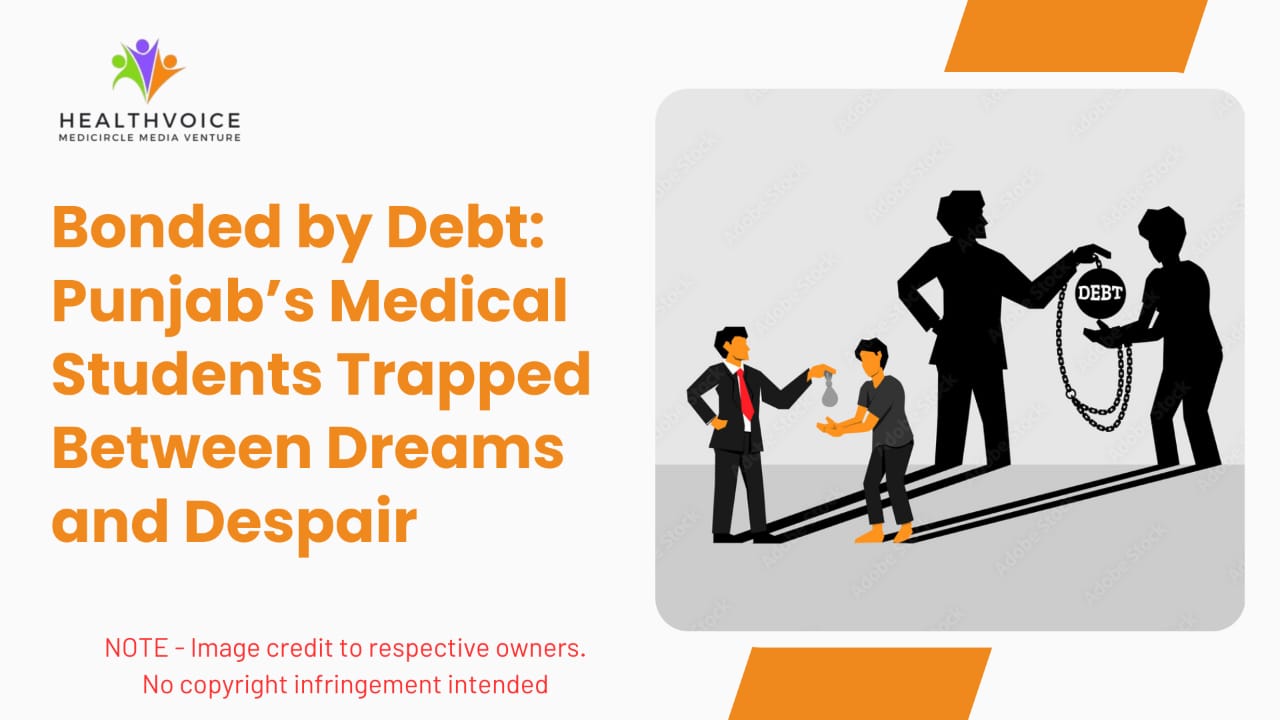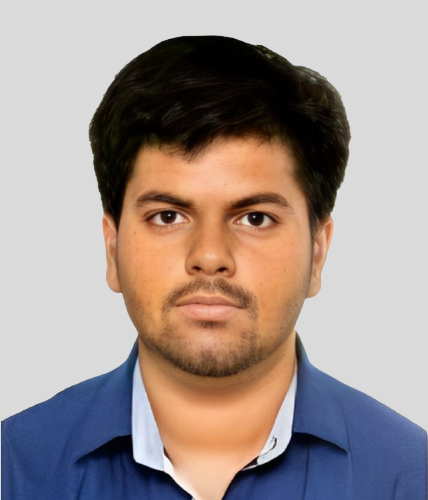Bonded by Debt: Punjab’s Medical Students Trapped Between Dreams and Despair
Punjab’s medical bond policy is a test of values. It asks whether the state views its doctors as partners in healing or as commodities bound by contracts.

The dream of becoming a doctor has always carried with it sleepless nights, years of discipline, and an unshakable commitment to the service of humanity. Yet in Punjab today, that dream has been shackled with chains of financial pledges, turning the noble pursuit of medicine into a nightmare for many families. A new bond policy introduced by the state demands that newly admitted MBBS students pledge property worth ₹20 lakh or face being shown the door before they even set foot inside a lecture hall. In a profession where compassion and dedication are supposed to guide every step, the system now begins with coercion and burden, planting seeds of anxiety in young minds that have barely begun their journey.
The policy was first floated last year but has now come into sharp focus with strict deadlines imposed by Government Medical College, Patiala, and Guru Gobind Singh Medical College, Faridkot. Both institutes have issued notices making it clear that students who fail to secure two property sureties amounting to ₹20 lakh will not be permitted to attend classes. At Patiala, the deadline is September 20, and in Faridkot it is September 19. The timing is ruthless. Instead of freshers entering the hallowed corridors of medicine with excitement, they now find themselves rushing to lawyers, registrars, and property offices, their future reduced to paperwork and signatures instead of textbooks and stethoscopes.
For parents, this demand feels less like an academic requirement and more like a cruel ransom. The sight of widows, single parents, and middle-class families desperately calculating the worth of ancestral homes has become disturbingly common. For many, the only asset they possess is the roof over their head, and to mortgage it for the mere right to attend medical classes feels unjust, even exploitative.
The government’s argument is that the bond will ensure that doctors trained in Punjab remain to serve the state’s crumbling healthcare system, particularly in rural areas where vacancies remain high. On paper, it is framed as a noble intention of retaining doctors for public service, curb brain drain, and ensure that taxpayers money spent on subsidized education is not wasted. In practice, however, it feels like a blunt instrument that punishes students for systemic failures. Doctor shortages are not a new crisis in Punjab. They stem from years of neglect in rural healthcare infrastructure, poor working conditions, delayed salaries, and lack of security for medical staff. Instead of addressing these root causes, the state has chosen to tighten the noose around students, making them collateral in a battle they did not create.
The bond amount itself reflects a stark lack of empathy. In neighbouring Haryana, the requirement is half (₹10 lakh) and students are allowed to present a bank guarantee instead of pledging immovable property. This flexibility acknowledges the financial diversity of families, ensuring that no deserving student is excluded purely because of inheritance or asset limitations. In Punjab, by contrast, the insistence on property sureties shows an alarming disconnect from ground realities. Families without significant land holdings or urban assets are left with no option but to give up on medical education altogether. Such exclusionary practices not only deepen inequality but also deprive the state of bright young minds who could have contributed meaningfully to healthcare.
Medical associations across Punjab have raised their voices sharply against the move. Resident doctors and medical students have held protests, calling the policy a “cruel joke” on families already burdened with rising tuition fees and living costs. The Medical Student Association of Punjab has warned that the measure will not solve the doctor shortage but worsen it. Forcing students into bonds or debt, they argue, will only create resentment, discouraging young graduates from embracing public service wholeheartedly. The very spirit of medicine risks being replaced by bitterness and disillusionment.
The legal dimension of the policy has also come under scrutiny. A petition challenging the bond is scheduled to be heard by the Punjab and Haryana High Court, and families are pinning their hopes on judicial intervention. The case raises fundamental questions about fairness, proportionality, and the right to education. Can the state deny classroom access to students who have cleared competitive exams simply because they cannot mortgage their family assets? Can the principle of public service be enforced through financial coercion rather than by creating incentives and dignified working conditions? These are not just legal issues but ethical dilemmas that strike at the heart of medical education.
The principal of GMC Patiala, Dr. R.P.S. Sibia, has defended the policy by stating that colleges are bound to follow government orders. While he hinted that deadlines could be relaxed, his stance reflects the broader rigidity of the system. Colleges find themselves caught in the crossfire between government mandates and the lived realities of students. The faculty may sympathize with students, but administrative compliance leaves little room for compassion. For the affected families, this bureaucratic posture adds to the frustration, as it signals an unwillingness to acknowledge the human cost of the policy.
The irony is that Punjab’s healthcare system is already gasping for breath. Rural health centres remain understaffed, doctors continue to seek safer and better-paying opportunities outside the state, and patients wait endlessly for specialists who never arrive. Instead of making these positions attractive through fair salaries, housing facilities, and security measures, the state has chosen to impose punitive bonds. This short-sighted approach risks creating a generation of doctors who see their early years in the profession not as a period of growth but as forced servitude.
For medical professionals watching this crisis unfold, the implications go beyond one state. Policies like these set dangerous precedents, where governments can offload systemic failures onto the shoulders of students and their families. If allowed to continue, they may discourage talented youth across the country from considering careers in medicine, worsening the already precarious doctor-patient ratio in India. The move also undermines the dignity of medical education by reducing it to a transaction enforced by collateral, stripping away its higher ideals of service and calling.
Parents, meanwhile, have voiced their anguish in raw terms. They describe the policy as “unrealistic,” “inhuman,” and “discriminatory.” Many point to the contradiction of investing years of savings to secure a medical seat for their child, only to be told that the education is conditional on risking their only home. The stress of these demands is not just financial but psychological. Families that once celebrated admission letters with pride now find themselves crushed under the weight of impossible choices. In the words of one parent, “We thought our child was stepping into a life of healing. Instead, we are asked to wound ourselves financially before they can even learn.”
The broader medical community has also raised concerns about trust. If future doctors are introduced to the profession under such coercive conditions, what message does it send about the values of the healthcare system? Medicine is meant to inspire confidence, empathy, and service. Binding students to debt before they even begin tarnishes these ideals, creating a culture of mistrust between the state and its doctors. The negative effects could be long-lasting, shaping how doctors view their relationship with government hospitals and public service in general.
As the high court prepares to deliberate, the story of Punjab’s bond policy is a mirror reflecting the fractures in India’s approach to medical education. A state struggling to provide adequate care is seeking quick fixes at the expense of its own students. What Punjab truly needs is not coercive bonds but constructive reforms: investment in rural healthcare infrastructure, fair treatment of doctors, transparent recruitment processes, and incentives that make public service appealing rather than compulsory. Only then can the state begin to heal both its patients and its medical system.
For now, students in Punjab wait anxiously, their future dangling between courtrooms and government files. Some may find ways to pledge properties, others may walk away from their dream, and a few may enter medical colleges carrying a burden that weighs heavier than their textbooks. The tragedy is not just in the policy but in the message it sends, that to heal others, one must first wound oneself. A profession built on sacrifice has always demanded long hours, sleepless nights, and emotional resilience. But when sacrifice is demanded upfront in the form of debt and despair, the nobility of medicine is reduced to a cold calculation of assets and liabilities.
Punjab’s medical bond policy is a test of values. It asks whether the state views its doctors as partners in healing or as commodities bound by contracts. It asks whether society still believes that education is a ladder of hope or whether it has become a chain of debt. And above all, it forces us to ask whether the future of medicine in India will be shaped by compassion and opportunity, or by coercion and exclusion. For the sake of both students and patients, one hopes that wisdom prevails before the bond becomes an unbreakable chain around the very heart of healthcare.
 Sunny Parayan
Sunny Parayan
#healthvoice #MBBS #MedicalEducation #DoctorsOfIndia #RightToEducation #HealthcareJustice #SaveFutureDoctors #MedicalStudents #HealthcareReform #RightToHealth #StudentRights #HealthcareForAll #MedicalDreams
